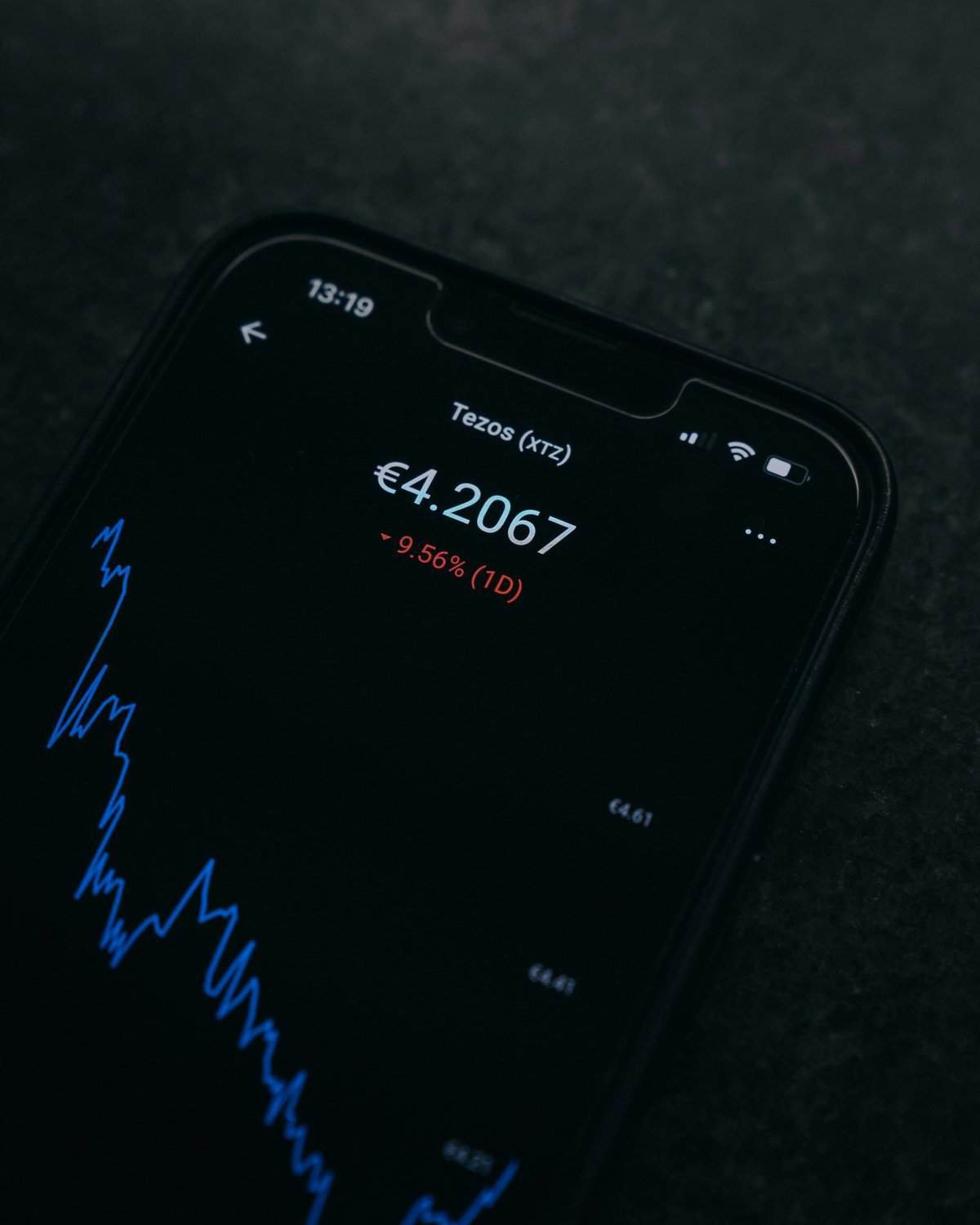Have you ever found yourself wondering about the best practices for crypto trading? If so, you’re not alone. Cryptocurrency trading can be both exciting and intimidating, especially if you’re just starting. The volatile nature of cryptocurrencies like Bitcoin, Ethereum, and countless altcoins can present substantial opportunities for profit, but they also come with significant risks. So, how do you navigate this complex landscape effectively?

Understanding Cryptocurrency Trading
Before diving into strategies and tips, it’s crucial to grasp what cryptocurrency trading entails. Trading cryptocurrencies means buying and selling digital coins and tokens on an exchange. The primary aim is to buy at a lower price and sell at a higher one, ideally making a profit in the process. However, the market’s inherent volatility can make that objective challenging.
The Role of Exchanges
Cryptocurrency exchanges serve as the platforms where trading occurs. They range from highly secure and well-regulated exchanges like Coinbase and Binance to decentralized exchanges that offer more freedom but less direct oversight. Picking the right exchange for your needs is one of the foundational steps in your trading journey. Consider factors like fees, available trading pairs, security features, and user interface when making your choice.
Types of Trading
Different strategies cater to different trading styles. You might prefer day trading, where positions are entered and exited on the same day, or swing trading, which involves holding assets for several days or weeks. Some opt for scalping, aiming for small profits frequently, while others might engage in long-term investing. It’s crucial to identify which style suits your skills and risk tolerance.
Setting Up A Trading Plan
Having a robust trading plan is indispensable. This plan should encompass your goals, risk management strategies, and the criteria for entering and exiting trades. Without a clear plan, it can be easy to make impulsive decisions based on market emotions rather than analytics.
Define Your Goals
What do you hope to achieve through crypto trading? Are you looking to build wealth over time, or is short-term profit your goal? Defining clear and achievable objectives will guide your trading decisions and keep you focused during tumultuous market conditions.
Risk Management
Effective risk management can be your safety net in crypto trading. Decide how much capital you’re willing to invest and risk on each trade. A common practice is to never risk more than 1-2% of your portfolio on a single trade. This approach helps to mitigate losses and preserves your trading account in adverse conditions.
Entry and Exit Strategies
Determining when to enter and exit trades is a critical component of your trading plan. Technical analysis, which involves analyzing charts and market trends, is a popular method used by traders to make informed decisions. Identify signals and patterns that align with your strategy and stick to them, avoiding emotional trading.
The Importance of Education
Education is your best asset when entering the cryptocurrency market. The landscape is ever-evolving, with new technologies and regulations emerging regularly. Staying informed about market trends, news, and the latest technological advancements can provide you a substantial edge.
Learning Resources
There are countless resources available for aspiring traders. Books, online courses, webinars, and forums like Reddit and Bitcointalk offer valuable insights. Choose materials that match your learning preferences and ensure you’re updated on both basic and advanced trading concepts.
Follow Reputable Analysts
To gain additional perspectives, consider following reputable industry analysts and traders on social media platforms. They often share their analyses and thoughts on market movements, which can supplement your understanding and offer new insights.
Technical and Fundamental Analysis
The backbone of effective trading lies in technical and fundamental analysis. These methods provide the basis for making informed predictions about where a cryptocurrency’s price might be headed.
Technical Analysis
Technical analysis uses historical price charts and market statistics to forecast future price movements. Indicators like moving averages, Relative Strength Index (RSI), and Bollinger Bands are tools that traders use to recognize potential trading opportunities. A solid grasp of these tools is essential for anyone aiming to trade based on technical analysis.
Fundamental Analysis
On the other hand, fundamental analysis involves evaluating a cryptocurrency’s intrinsic value by examining factors like technology, team, market need, and news events. This analysis can be crucial for long-term investments, where the potential of a project could indicate future growth.

The Psychology of Trading
Understanding your psychological disposition is equally important in trading. Emotions can lead to impulsive decisions, resulting in significant losses.
Managing Emotions
Fear and greed are your biggest enemies in the trading world. Fear might prevent you from entering a potentially lucrative trade, while greed might keep you in a trade longer than needed. By acknowledging these emotions, you can implement strategies to control them, such as setting stop-loss orders to limit potential losses or taking profits at predefined levels.
Staying Consistent
Consistency in approach and execution helps mitigate emotional trading. Stick to your trading plan and strategies, and resist the urge to second-guess your decisions based on fleeting market changes.
Keeping Up with Market Conditions
The crypto market is known for its rapid changes. Being able to adapt and respond to these shifts is vital for success.
News and Market Sentiment
Market sentiment can shift dramatically based on news events. Government regulations, security breaches, and technological advancements can all impact prices. Staying updated with reliable news sources ensures you’re not caught off guard by market-moving events.
Revisiting Your Strategy
As new developments unfold, your strategies might need revisions. Regularly assess and refine your trading approach based on performance and evolving market conditions to ensure sustained success.

Security Best Practices
Security should be a top priority when trading cryptocurrencies. The decentralized nature of these assets, while empowering, also requires vigilant self-protection measures.
Secure Wallet Usage
Choose a reliable wallet for storing your cryptocurrencies. Hardware wallets offer high security against hacks and are a preferred choice for long-term storage. Ensure your wallet software is always up-to-date and use complex passwords combined with two-factor authentication.
Be Cautious of Scams
The crypto space is not without its share of scams and phishing attempts. Always verify the authenticity of a platform before using it, and be skeptical of offers that seem too good to be true. Never share your private keys or seed phrases with anyone.
Building Community Connections
Being part of a community can enrich your trading experience, providing support and new insights.
Join Trading Communities
Online communities and social media groups can be invaluable resources. Engaging with fellow traders allows you to learn from their successes and mistakes. It also offers a platform to discuss strategies and market observations.
Attend Events and Webinars
Attend crypto events, webinars, and virtual meetups to network with industry experts and enthusiasts. These gatherings can open doors to new opportunities and deepen your understanding of market dynamics.

Long-Term vs. Short-Term Trading
Understanding the distinction between long-term and short-term trading can help you adopt strategies that align with your goals.
Long-Term Holding
If you’re inclined toward long-term investment, you’re leaning more into a strategy known as “HODLing.” This approach focuses on buying and holding onto assets with the anticipation of future price appreciations.
Short-Term Gains
Conversely, short-term trading involves making frequent trades to capitalize on immediate market opportunities. While this method can be profitable, it demands a keen eye on market movements and a solid risk management strategy.
Evaluating Coins and Tokens
Before entering a trade, evaluate the coin or token thoroughly to assess its potential.
Market Cap and Liquidity
A cryptocurrency’s market capitalization and trading volume provide insights into its liquidity and stability. High market cap coins generally indicate less risk than low market cap ones, which might have more volatile price swings.
Project Fundamentals
Examine the fundamentals of the project behind the cryptocurrency. Consider the team’s background, the problem the project solves, and its community support. A solid project foundation often correlates with long-term viability.

Developing Strategies
Once you’ve familiarized yourself with the basics, it’s time to develop sound trading strategies.
Trend Following
A strategy that involves identifying and following the overall direction of the market. It’s less about predicting where the market is going and more about responding to the reality of current market behaviors.
Arbitrage
Taking advantage of price discrepancies across different exchanges constitutes arbitrage. Although less common due to increasing market efficiency, opportunities still arise for traders closely monitoring the market.
Measuring Performance
Track and evaluate your trading performance to identify areas of improvement.
Keeping a Trading Journal
Documenting your trades in a journal can provide insights into your trading habits. Record details like entry and exit points, strategies used, and the market conditions, which can help refine your approach over time.
Regularly Reviewing Strategies
Periodically review your trading strategies based on performance data. Understanding which strategies work and which don’t is crucial for enhancing profitability and minimizing losses.
Staying Adaptable and Resilient
The only constant in the cryptocurrency world is change. Staying adaptable in the face of new challenges and opportunities is essential.
Embrace Technological Innovations
Blockchain technology evolves rapidly, and staying open to new tools and techniques can enhance your trading capability. Whether it’s AI trading bots or more advanced analytical software, embracing these innovations can offer a competitive edge.
Cultivating Resilience
The crypto market’s ups and downs can test even the most experienced traders. Cultivating resilience will not only help you recover from setbacks but also maintain a positive and focused mindset, essential for long-term success.
By integrating these practices into your trading routine, you’re well-positioned to navigate the intricate and dynamic world of cryptocurrency trading. With careful planning, ongoing education, and strategic execution, you can enhance your chances of success in this exciting financial frontier.
